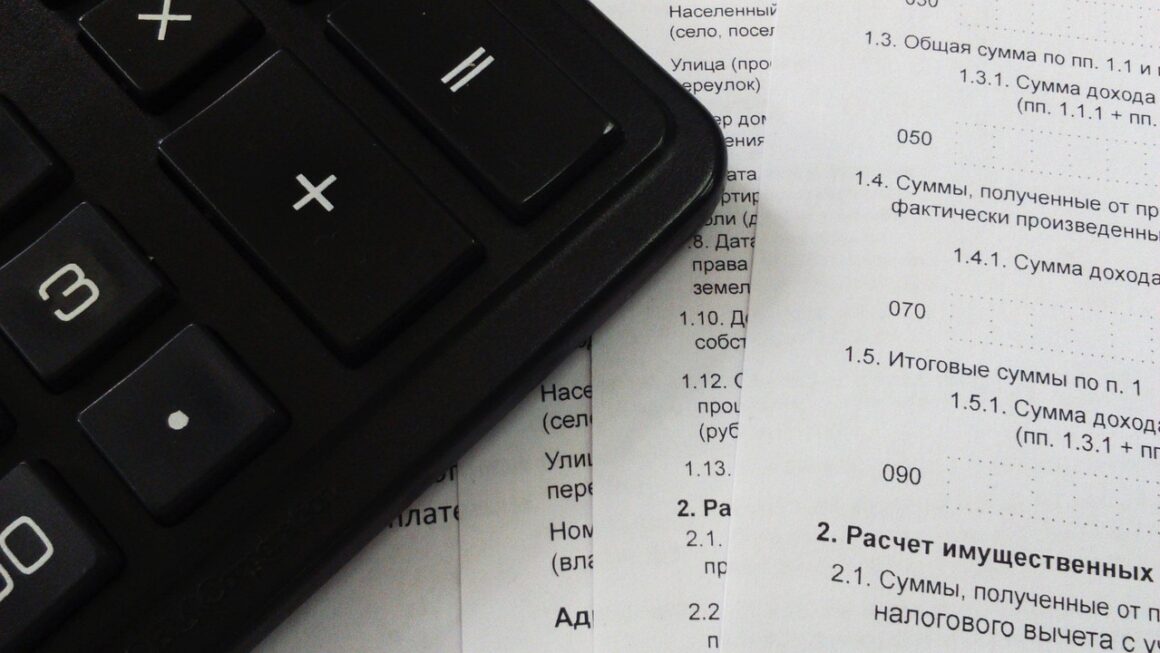Craving flexibility, the ability to be your own boss, and a steady stream of income? The world of food delivery gigs might just be your ticket to financial freedom and schedule control. Whether you’re a student looking to make extra cash, a stay-at-home parent seeking part-time work, or simply someone who enjoys driving and exploring your city, food delivery services offer a unique and accessible earning opportunity. But before you jump in, let’s explore the ins and outs of this burgeoning industry to see if it’s the right fit for you.
What are Food Delivery Gigs?
Understanding the Basics
Food delivery gigs involve using your personal vehicle (car, scooter, or even bicycle in some areas) to pick up food orders from restaurants and deliver them to customers’ doorsteps. You typically work as an independent contractor, meaning you’re self-employed and responsible for your own taxes and expenses.
These gigs are facilitated by various food delivery platforms, such as:
- DoorDash
- Uber Eats
- Grubhub
- Instacart (which often includes grocery and restaurant delivery)
How They Work: A Step-by-Step Guide
The process is generally straightforward:
- Accepting Orders: You receive order notifications on your smartphone through the delivery app. You can choose to accept or decline the order based on factors like distance, pay, and restaurant location.
- Navigation: The app provides navigation to the restaurant and then to the customer’s address. Many apps use GPS integration to optimize routes and provide real-time traffic updates.
- Pickup and Delivery: You pick up the order from the restaurant, verify it against the order details, and deliver it promptly to the customer, ensuring the food is handled with care.
- Payment: Payment is typically processed through the app, and you receive your earnings based on a pre-determined formula involving base pay, tips, and potential bonuses or promotions.
Earning Potential
Earnings can vary widely depending on factors such as:
- Location (urban areas typically offer more opportunities)
- Time of day (peak hours like lunch and dinner are busier)
- Demand (higher demand means more orders and potentially higher pay)
- Tips (customer generosity significantly impacts earnings)
- Vehicle efficiency (fuel costs can impact your net earnings)
According to various sources, average hourly earnings can range from $15 to $30, but it’s essential to factor in expenses like gas, vehicle maintenance, and self-employment taxes when calculating your actual take-home pay.
Benefits of Food Delivery Gigs
Flexible Schedule
One of the biggest draws of food delivery gigs is the flexible schedule. You can choose when and where you want to work, allowing you to fit the gig around your other commitments.
- Work When You Want: No set hours or mandatory shifts.
- Set Your Own Pace: Control your workload by accepting or declining orders as you see fit.
- Perfect for Side Hustles: Easily combine food delivery with other part-time jobs or responsibilities.
Independence and Autonomy
As an independent contractor, you are your own boss. You make your own decisions and are not micromanaged by a supervisor.
- Be Your Own Boss: No boss looking over your shoulder.
- Choose Your Work Area: Target areas with high restaurant density and delivery demand.
- Direct Customer Interaction: Opportunity to provide excellent customer service and earn positive reviews (and potentially bigger tips!).
Low Barrier to Entry
Compared to many other jobs, food delivery gigs have relatively low barriers to entry. The basic requirements are typically:
- A valid driver’s license
- A reliable vehicle (car, scooter, or bicycle)
- A smartphone with a data plan
- A background check
Potential for Exercise
Especially for those using bicycles for delivery, these gigs can offer a built-in opportunity for exercise. This can be a great way to stay active while earning money.
- Physical Activity: Great for those seeking an active job.
- Explore Your City: Discover new neighborhoods and restaurants.
- Eco-Friendly Option: Bicycling reduces your carbon footprint.
Challenges and Considerations
Vehicle Costs
Vehicle-related expenses are a significant factor to consider.
- Fuel Costs: Gasoline expenses can quickly add up, especially with frequent deliveries. Consider a fuel-efficient vehicle or explore electric vehicle options.
- Maintenance: Regular maintenance, such as oil changes, tire rotations, and repairs, is essential to keep your vehicle in good working order.
- Depreciation: Your vehicle will depreciate in value over time due to wear and tear.
- Insurance: Your personal auto insurance policy might not cover you while you’re delivering food. Consider supplemental insurance or a rideshare insurance policy.
Inconsistent Income
Income can fluctuate significantly depending on factors like demand, weather conditions, and competition from other delivery drivers.
- Seasonal Fluctuations: Demand may vary based on the season.
- Competition: The number of delivery drivers in your area can impact your earnings.
- Unexpected Delays: Restaurant wait times and traffic congestion can affect your ability to complete deliveries quickly.
Safety Concerns
Food delivery can involve some safety risks, especially when delivering at night or in unfamiliar areas.
- Traffic Accidents: Spending a lot of time on the road increases your risk of accidents.
- Theft and Robbery: Carrying cash or valuable items can make you a target for theft.
- Customer Interactions: While rare, negative interactions with customers can occur.
Self-Employment Taxes
As an independent contractor, you are responsible for paying self-employment taxes, which include Social Security and Medicare taxes.
- Estimated Taxes: You will likely need to pay estimated taxes quarterly to avoid penalties.
- Tax Deductions: You can deduct certain business expenses, such as mileage, phone expenses, and insurance premiums, to reduce your tax liability.
Maximizing Your Earnings
Strategic Scheduling
Working during peak hours and in high-demand areas can significantly boost your earnings.
- Target Lunch and Dinner Rushes: These are typically the busiest times of day.
- Focus on High-Density Areas: Areas with a concentration of restaurants and apartments tend to have higher order volume.
- Utilize App Features: Many apps offer heatmaps or demand indicators to help you identify the busiest areas.
Optimizing Your Routes
Efficient route planning can save time and reduce fuel costs.
- Use GPS Navigation: Rely on the app’s navigation system to find the fastest routes.
- Avoid Congested Areas: Be aware of traffic patterns and avoid routes that are prone to congestion.
- Plan Your Pickups: Accept orders that are geographically close to each other to minimize travel time.
Providing Excellent Customer Service
Good customer service can lead to higher tips and repeat business.
- Be Prompt and Professional: Arrive on time and deliver orders with a smile.
- Communicate Effectively: Keep customers informed about the status of their order.
- Handle Orders with Care: Ensure that food is delivered hot and in good condition.
Utilizing Promotions and Bonuses
Take advantage of any promotions or bonuses offered by the delivery apps.
- Complete Challenges: Many apps offer challenges or quests that reward you for completing a certain number of deliveries.
- Refer New Drivers: Some apps offer referral bonuses for recruiting new drivers.
- Stay Informed: Keep an eye out for special promotions or incentives offered during holidays or events.
Tax Implications for Food Delivery Drivers
Tracking Your Income and Expenses
Accurate record-keeping is crucial for tax purposes. Keep track of all your income and expenses related to your food delivery gig.
- Use a Spreadsheet or App: Track your earnings, mileage, and expenses in a spreadsheet or using a dedicated app.
- Keep Receipts: Save all receipts for gas, vehicle maintenance, and other business expenses.
- Consult a Tax Professional: Consider seeking advice from a tax professional to ensure you are taking all available deductions.
Understanding Deductible Expenses
Several expenses related to your food delivery gig may be tax-deductible. Some of the most common deductions include:
- Mileage: You can deduct the standard mileage rate for each mile driven for business purposes. Alternatively, you can deduct the actual expenses of operating your vehicle, such as gas, oil changes, and repairs.
- Phone Expenses: You can deduct the portion of your phone bill that is attributable to business use.
- Insurance Premiums: You may be able to deduct the cost of supplemental insurance or rideshare insurance policies.
- Supplies: You can deduct the cost of any supplies you purchase for your business, such as hot bags, insulated containers, and cleaning supplies.
Filing Your Taxes
When filing your taxes, you will need to report your income and expenses on Schedule C (Profit or Loss From Business) and Schedule SE (Self-Employment Tax).
- File Form 1099-NEC: You will receive a Form 1099-NEC from each delivery platform you worked with if you earned $600 or more.
- Pay Self-Employment Taxes: You will need to pay self-employment taxes on your net earnings, which are subject to both Social Security and Medicare taxes.
Conclusion
Food delivery gigs offer a compelling opportunity for individuals seeking flexible work arrangements and the ability to earn income on their own terms. While the benefits of flexible scheduling, independence, and low barrier to entry are appealing, it’s crucial to be aware of the challenges, including vehicle costs, inconsistent income, and safety concerns. By strategically scheduling your work hours, optimizing your routes, providing excellent customer service, and diligently tracking your income and expenses for tax purposes, you can maximize your earnings and make the most of your food delivery experience. Ultimately, success in this industry hinges on careful planning, dedication, and a commitment to providing reliable and efficient service. Whether you are looking for a side hustle or a more substantial source of income, food delivery gigs can be a rewarding and fulfilling option for those willing to put in the effort.




